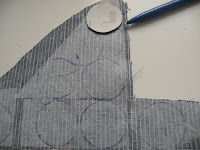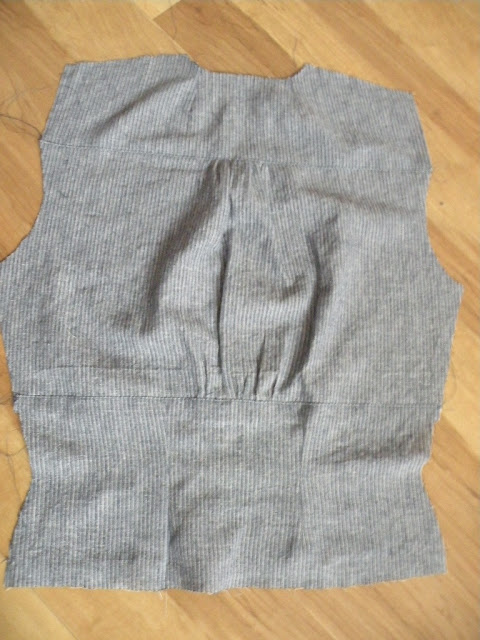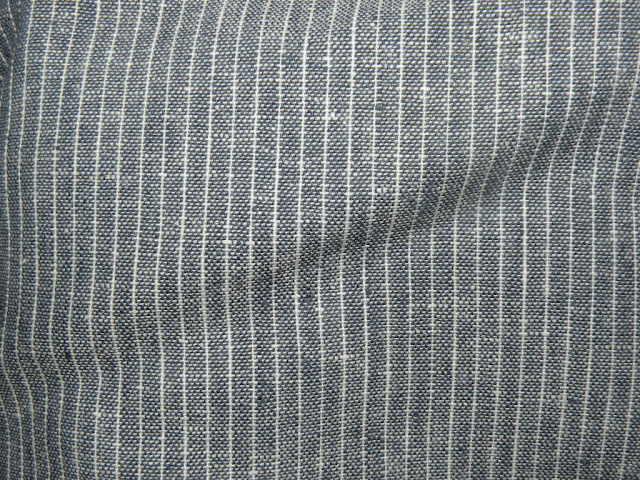If you follow the steps on the Lonsdale instruction sheet that comes with the pattern:
- skip the basting of the lower edges at step 4.
- Instead step 5 and 6 attach the waistbands, stitch one to the outer layer and one to the inner layer. Keep the layers apart!
- Go to step 7. Follow the steps from 7 to 11 (you end with assembling the skirt)
- Attach the skirt to the outer layer waistband just as instructed in step 12
After attaching the skirt to the waistband insert the invisible zipper (sew it to the outer layer of the dress)
There are many tutorials on the net, like
this one

Here is the invisible zipper foot, the needle is placed in the middle for stitching the zipper:

This how the dress looks like from the inside. On mine the white is the inner layer of the bodice, with the waistbands attached. (I didn't finish the seamline on the back of the skirt yet, but this is the way how I learned to do it...)

Turn the two bodice layers inside out, the wrong side of the inner bodice is on the upside now:
(Leave the straps as they are, we only need to stitch at the sides of the bodice since the upper part is already finished!)

Here are the layers turned inside out: the wrong side of inner layer bodice (which I'm holding in the bottom picture) and the outer layer on the bottom with the invisible zipper attached. (don't forget, the invisible zipper is stitched on the right side of the fabric!)



I pinned the sideseams on top of each other and flattened the fabric towards the side which is above the zipper (on the right here, you can see a piece of it on the bottom right, under the waistband)

If you work carefully the seams of the waistbands match up (on top of the inner bodyce, on the bottom the outer layer with the invisible zipper):


Since we are working on the wrong side of the bodice, I pinned and stitched the sides together:

It is important to stitch close to the zipper. I used my invisible zipper foot again, but I placed the needle on the side instead of in the middle The zipper foot glides above the coils. If the needle is placed in the middle you sew right next to the coils where you attach the zipper to the fabric. If you place the needle to the side you sew a bit more to the side:


Here it is, the finished seam. I didn't go all the way to the bottom of the waistband, because I am going to slipstitch it to the inner waistband just like in step 13 of the Lonsdale instruction sheet. (You can now stitch the two waistbands together along the seamline of the bodice pieces, I just didn't) The zipper coils are not visible but they are on the inside, here on the left of the seamline.
You can see it here if you peek inside. Now you can do the other part of the zipper and when both finished turn the bodice layers inside out, now the right sides on the outside:

After turning the right sides out, press:



Here you can see that the zipper is sandwiched between the two layers. There is no need to finish the edges along the zipper because they are on the inside now.
Of course, you can sew the two waistbands on the seam where they are attached to the bodice pieces, you just can't stitch all the way to the sides, but that's not a big deal.
The only thing left now is slipstitching the waistband (step 13 on the Lonsdale instruction sheet)
































































